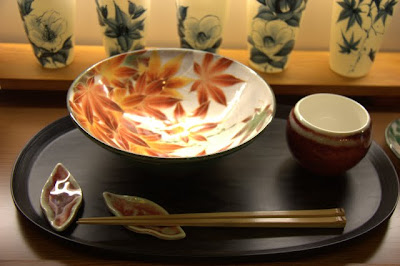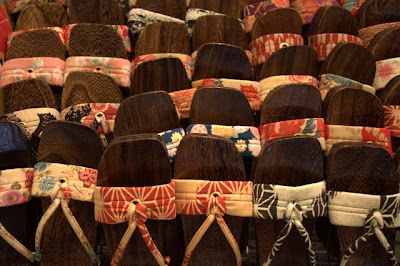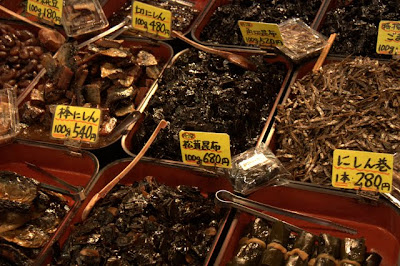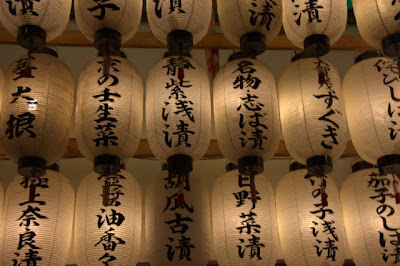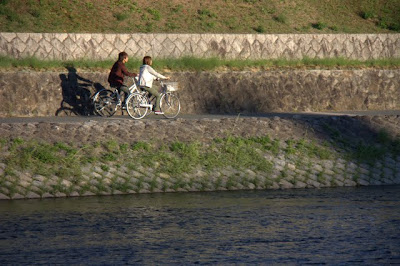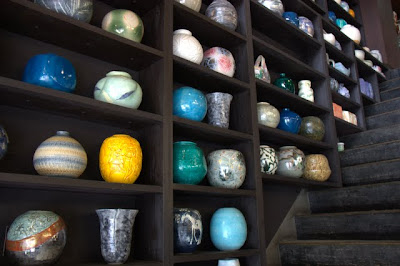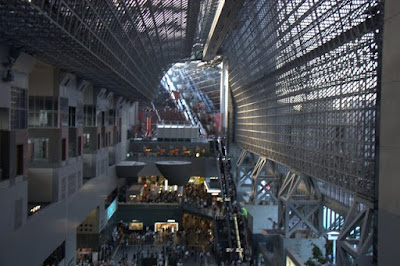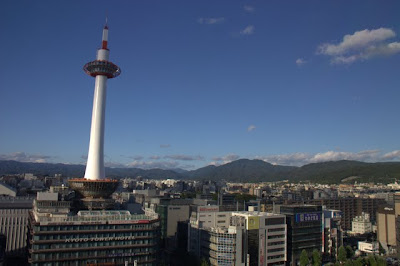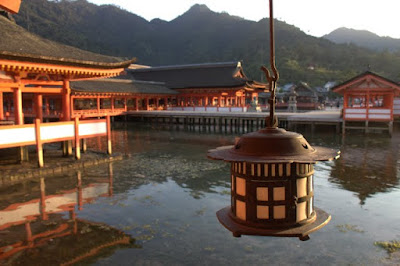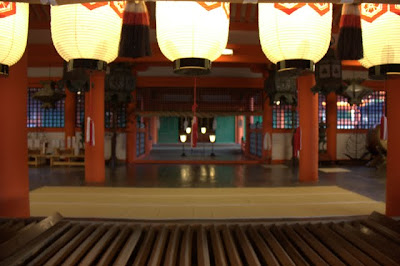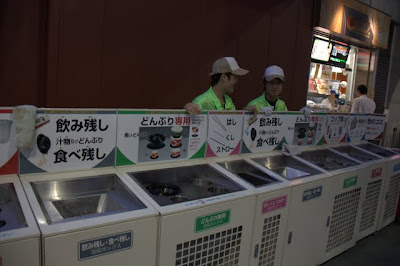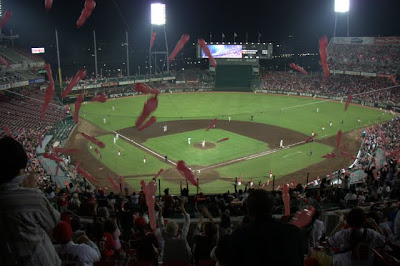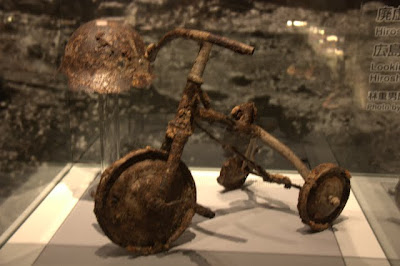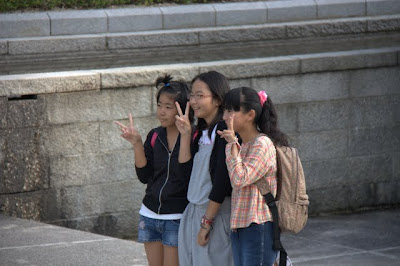Scenes from Kyoto: Market Edition
Every country has their markets. I love the farmers and craft markets at home, and I love them even more on the road because it shows off all of the local delicacies, specialties and colors. Although we didn’t buy anything in Kyoto’s market except for what turned out to be not too tasty gummy candy. But things were interesting to look at. Here are some scenes from Kyoto’s market:
Scenes from Kyoto
If you want to see a mix of old and new Japan, it all can be found in Kyoto. While we personally found that Japan’s other cities captivated our attention more, Kyoto is worth a visit for sure. Here’s some scenes from around town:
Scenes from Miyajima
[Editor’s note: As much as I miss my friends and family and wish I was eating turkey today, I’m very thankful we have this incredible opportunity to travel around the world for a year and see amazing things like Miyajima. I know you all (at least the you all that are in the United States) are not reading this today, you’ve got turkey to eat and football to watch, but just getting caught up so you have a way to procrastinate Monday morning. Happy Thanksgiving!]
Miyajima is an island close to Hiroshima, home to street-roaming deer, a scenic Buddhist shrine, and an iconic vermillion Tojii gate that appears to be floating in the water during high tide. We timed our visit with high tide and sunset, and found a peaceful island with roaming deer and an ethereal beauty. Here’s some scenes from our visit:
Take Us Out to the Carp Game
We both used to be baseball fans. But sometime in the past 19 years, any love for baseball died. It is hard to care about baseball when generations of kids are growing up without seeing our home team win even just one more game than they lose, season after season; too many fans care about the pierogi races, fireworks, concerts, and fancy stadiums more than the game itself; the owners appear to have no desire to improve the team because losing still makes them money; and baseball in the United States is a business for big market teams instead of a sport for the people.
We’ve heard stories about the fervor and enthusiasm the Japanese fans can whip up for their teams. So while we were in Hiroshima, we decided to put our baseball cynicism aside and go root on the Hiroshima Carp.
We knew nothing about the Carp before we bought the tickets, but The Google informed us that we should feel right at home at the Carp game. Like the perpetually losing Pittsburgh Pirates, the Carp have serious winning problems. The Carp’s glory days were in the seventies, at least judging from the banners displayed in Mazda Zoom-Zoom Stadium. (Apparently corporate stadium names are also popular in Japan). But unlike the majority of Pirates fans (most notably excluding my ever-faithful Aunt Lynne, Uncle John, and cousins Karen and Johnny), the Carp fans have the ability to stay enthusiastic and hopeful during the entire game. And I mean the entire game.
I was doubtful that the Carp could be formidable opponents. Fish, even big ones like carp, just don’t sound that intimidating. Piranahas, maybe. Sharks, yes. But carp? And they seemed unoriginal, without rhyme or reason. Their logo emulates the logo of the Cincinnati Reds, but their mascot – notably, not a carp – is similar to the Philadelphia Phillies Fanatic (probably because the mascot was designed by the same firm). But we were in Hiroshima, so it’s root, root, root for the home team.
Before we got down to the business of rooting for the Carp, we checked out the vendors to see what was on offer. Happily, we found overpriced beer, nachos and hot dogs, because it just isn’t baseball without them. (Well, Sean was happy about the hot dogs; I wasn’t touching those with a ten feet pole. Who knows what goes in Japanese hot dogs?) Unhappily, our budget only allowed one beer, and let’s just say that the nachos and hot dogs are not the forte of the Japanese. We should have stuck with any of the other baseball classics. You know, sushi, edadme, and udon noodles. And let’s not forget the roaming tea vendor – our friend Danielle would be pleased.
Stomachs full, we turned our full attention to the game. Okay, we turned most of our attention to people watching, and partial attention to the game. There were Carp fans of all sizes, and many extended families taking it all in. The most fascinating part of the game was not the baseball; that was pretty much exactly like American baseball – long and drawn out with very few big plays, nine innings, a star player, and fair-ups. And a mobile Cup-of-Noodles for entertainment and corporate advertising between innings instead of the Mrs. T’s pierogie races. And, of course, a theme song played over and over with shots of the crowd on the jumble-tron. (The Carp theme song is the Inspector Gadget theme, in case you were wondering).
No, the most fascinating part of the game was the rapt attention the fans kept during all nine innings and their dogged persistence in repeating the same two or three chants over and over and over. Maybe it was because we didn’t know what they were saying, but it was amazing how many times the Carp fans repeated the same chants during the course of the game. When the Carp are at bat, the drum players in outfield cue the beat, and the Carp fans dutifully follow, chanting what I imagined was something like “Let’s Go Carp” and hitting two sticks together.

Okay, maybe everyone wasn't paying attention the whole time. This young Carp fan diligently hit sticks together for a while, but then started playing video games.
They didn’t let up the whole time the Carp were at bat. When the other team was up, it was their turn. The chants never died down, never were half-hearted, never sagged. Their tireless dedication was fascinating. And it paid off in a 1-0 shut-out for the Carp, with the pitcher pitching a complete game.
Peace
Visiting Hiroshima was hard. What made Hiroshima different than the other sites of former atrocities and hardships we’ve seen is that I somehow felt complicit, even though I wasn’t even born at the time America dropped two atomic bombs on Hiroshima and Nagasaki to end World War II.
Even though it was always something I knew intellectually, visiting Hiroshima made it really hit home that we Americans should never forget that there are serious implications counterbalancing all of the freedoms and powers our country possesses.
But visiting Hiroshima, above anything else, was inspiring. Hiroshima’s Peace Museum doesn’t dwell on blame. I was impressed by the museum’s straightforward presentment of the facts: there was a World War; Japan was slow in admitting defeat; America dropped a nuclear bomb; much suffering occurred. People can debate what should have happened, whose fault it was, why it happened, whatever, but the museum gets right to the point. The people’s willingness to forgive Americans for causing all of the death, destruction and suffering was truly amazing.
What we saw in Hiroshima was that any anger towards a really, really negative event was turned around and redirected towards something positive: the goal of peace and the abolition of all nuclear weapons. Today, instead of hate and bitterness, peace radiates all over Hiroshima from the hypocenter where the bomb was dropped so many years ago. Everything in Hiroshima is about peace: from the peace signs the youth flash when posing for a picture in Peace Memorial Park, to Peace Memorial Park, to Peace Boulevard, to displays in the Peace Museum urging abolition of nuclear weapons.
What struck me the most were the rainbow of paper cranes, hanging from memorials and statues all over the city, but especially in Peace Memorial Park.
When I was younger, I remember reading a book about a girl who was slowly dying in the hospital from leukemia as a result of exposure to radiation ten years before. Before she died, the story goes, she was trying to craft 1,000 paper cranes for peace. In the book I read, she didn’t finish her goal, but her classmates jumped in to finish. I’ve heard alternate versions of the story where she did finish.
Today, people from all over the world are still making paper cranes and delivering them to be displayed in Hiroshima. Today, Hiroshima is not a horrible event from 1946; it is a real, living breathing place with vibrancy, resiliency, and strong, forgiving people. That’s not to say that people don’t still hurt and suffer, because they do, but they’ve chosen peace as a means to propel them forward.

Oleanders bloom all over the city. They said it would be years before vegetation grew back, but against all odds, the oleanders sprung up in the spring.

